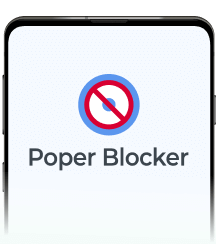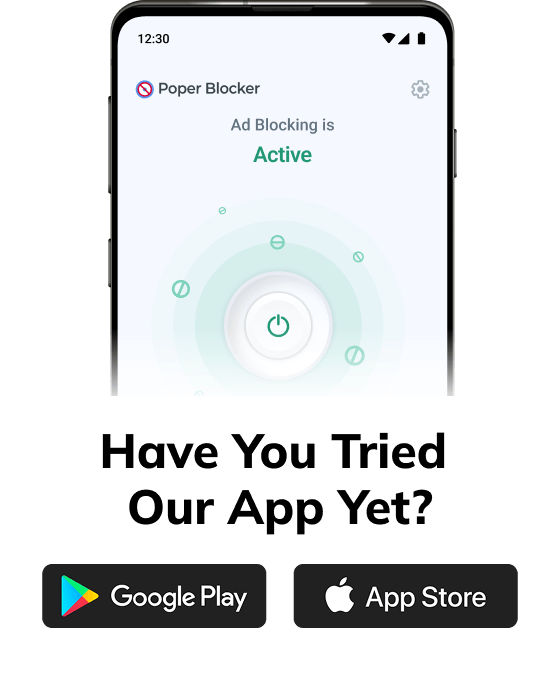Have you ever been deep into reading an article online, only to have your flow disrupted by a sudden window popping up out of nowhere? That’s a pop-up for you, the internet’s way of catching your eye, for better or for worse.
OptiMonk’s insights has revealed that the average conversion rate for popups stands at 11.09%. It just goes to show how much of an effective tool they are for advertisers, which is why they are not likely going away anytime soon.
What Is a Pop-up, and What Is Its Purpose?
In its simplest form, a pop-up is a website user interface element that suddenly appears and demands immediate attention from a viewer. It gets its name from this sudden appearance, mimicking the act of popping up unexpectedly. Its primary goal is to quickly capture the users’ attention and encourage action. This action might include:
- Subscribing to newsletters
- Claiming discounts
- Taking part in surveys
- Notifying the user about the most recent updates or offers
Is It Pop up, Pop-up, or Popup?
When discussing online terminology, it is important to understand the distinct differences between “pop up”, “pop-up”, and “popup” for clear communication.
As a verb, “pop up” refers to the action of appearing suddenly. This phrase is most commonly used when describing any moment that something comes into view without warning and isn’t exclusive to the internet.
On the flip side, “pop-up” can be used as both an adjective and a noun. When used as an adjective, it describes anything that appears unexpectedly such as a pop-up ad or pop-up window on a website. As a noun, it just refers to the thing itself like in the phrase “a pop-up.” This version is more grammatically proper and often considered correct in formal writing or technical descriptions.
Despite its lack of grammar prowess and shortcomings in formality, “popup”, with no space in between letters, is actually the most widely used spelling. Its popularity across informal settings, especially in online conversations, reflects society’s preference for brevity and convenience.
Why Are Pop-ups Important?
Online ecosystems cannot do without pop-ups since they are a great help in many ways than just advertising:
Lead Generation
This is among their main functions. By capturing visitor information through forms, pop-ups enable businesses to grow their email lists and nurture leads through targeted marketing campaigns. This direct method of gathering contact details is efficient and effective, allowing for a personalized approach to follow-up communications.
Promotions
Additionally, content promotion and special offers are some of the reasons why advertisers might consider using pop-ups. They offer an opportunity to highlight discounts, new products, or exclusive content directly to their audience.
This immediate visibility increases the likelihood of conversions as offers are presented at a point in time when the user is already engaged with the site. The strategic placement and timing of these internet pop-ups can significantly enhance their effectiveness making them a valuable tool for boosting sales and engagement.
Feedback
Pop-ups also act as a means for collecting feedback from people visiting websites. At certain moments during the users’ journey through a website, businesses can present surveys or feedback forms that yield useful insights about their target audience.
It contains essential information that helps in understanding their behavior on websites, upgrading goods or services, and improving the overall experience of users on their platforms.
User Guidance
These dialogs are also an excellent medium for user guidance. Whether it’s browsing through a website, highlighting new features, or offering assistance, pop-ups can enhance the visitor’s user experience, so that they can find what they’re looking for and might even be encouraged to explore further.
Pop-up Examples
There are various types of pop-ups used for specific purposes. Every form serves a purpose ranging from building relationships with users to maintaining compliance with legislation requirements:
Subscription Invites: Sign up for newsletters or updates
Subscription prompts commonly appear on the screen when a user is deeply involved in the content. In many instances, such pop-ups propose something valuable. It can be a discount or an exclusive article that can only be accessed by giving your email address.
Consequently, in this way, other than increasing the number of subscribers to the mailing list, this can be a means for a company to apply a one-to-many marketing strategy.
Discount Offers: Grab a code for a sweet deal
Another category of pop-ups is discount offer prompts that give users instant incentives for purchases. This approach thoughtfully creates a sense of urgency by presenting time-limited discounts or special offers to compel users into acting immediately. This strategy comes in handy mainly in e-commerce platforms regarding savings being able to alter buying decisions significantly.
Exit-Intent Surveys: Share your thoughts before you go
Exit-intent surveys intend to comprehend user behavior and preferences. They tend to emerge each time a visitor seems likely not interested in staying on that web page anymore to receive feedback or give them reasons why they should reconsider their decision to leave the page.
In any case, where one wants an opinion about improving websites or quick last-minute proposals, these exit-intent surveys can be very enlightening and reduce bounce rates.
Age Verification: Confirm you’re old enough for the content
The regulatory function of age verification pop-ups is to ensure appropriate access to content. Age confirmation requests by these pop-up windows help websites adhere to legal obligations and guard minors from accessing unsuitable things. Such a type of pop-up is crucially important for websites trading age-restricted goods or those featuring adult materials to have a responsible online environment.
Pros and Cons of Using Pop-ups
The Pros
Effective for capturing attention and driving action
Pop-ups can remarkably improve user engagement and conversion rates if applied correctly. Primarily, they have the advantage of being attention-grabbing. By springing into view for users, they easily command attention and are therefore great tools for promoting special offers, collecting emails, or giving important information.
Versatile in use, from marketing to feedback collection
Another advantage is that pop-ups are versatile. They can be programmed differently – timing, content, trigger events – based on specific user journeys on the site. This personalization can make content more relevant thereby increasing the chances of positive feedback.
The Cons
Can be seen as intrusive, disrupting the user experience
One disadvantage is that they may disrupt the overall user experience. Sometimes pop-ups seem annoying since they might appear intrusive thus breaking one’s line of thought which leads to frustrations. This is especially disruptive if the pop-up cannot be easily dismissed or continues appearing frequently as it deters visitors from further accessing your website services.
Risk of being blocked by pop-up blockers
Additionally, the wider use of a pop-up blocker is likely to hamper the effectiveness of pop-ups too. Many online users resort to using these tools to enhance their browsing experience by preventing interruptions. Consequently, some well-designed ones may never reach some segment of targeted recipients hence reducing their efficiency.
Hate Pop-ups? Use Poper Blocker
Pop-ups occur in several forms, including ads coming out of the blues, subscription forms, or confirmation of your age, and can annoy many end users.
This is where Poper Blocker comes in handy as it offers an effective pop-up blocker for a less cluttered browsing experience. The first line of defense in stopping a pop-up window from appearing on your computer while you are browsing is this browser extension, which works perfectly with Chrome and Edge.
Here’s how to use it:
1. Installation
Start by adding Poper Blocker to your browser. Chrome users should visit the Chrome Web Store, while Edge users should go to the Microsoft Edge add-ons page.
Look for Poper Blocker then click ‘Add to Chrome’ or ‘Get’ if you are using Chrome or Edge, respectively. Following this, the plugin will seamlessly integrate into your browser thereby enabling a pop-up free browsing experience.
2. Activation
Once installed, locate the Poper Blocker icon at the top right corner of your browser. This button opens up possibilities for a personalized online environment. Upon clicking on it, the control panel shall show up and here, the settings can be modified.
3. Blocking Basic Pop-Ups
To disable pop-ups that open in new tabs or windows, activate the ‘Block basic popups’ option. This is a quick fix that deals with the most prevalent types of pop-ups, therefore giving immediate relief against disturbances like this one.
4. Blocking Advanced Pop-Ups (Overlays)
For aggressive and persistent dialogs that usually appear on the same screen, switch on the ‘Block advanced popups (overlays)’. This feature was specifically developed to stop pop-up ads that tend not to close easily, from annoying you.
A Cleaner Browsing Experience Awaits!
One should have a smooth internet experience without being interrupted by pop-ups. Whether it is reading the latest news, extensive research, or catching up on your favorite blogs, one thing you do not need is an intrusive pop-up distracting you from your train of thought. Here comes Poper Blocker, with its smart responses to bring back your peace and tranquility online.
With this powerful extension you’re not just blocking annoying spam pop-ups, you’re also customizing your web surfing experience. So start filtering out the noise and focus on what truly matters to you. This is more than just an ad blocker, this is your trusted online guardian that keeps out all unwanted advertisements for uninterrupted browsing.
FAQs
Are pop-ups of any use to users?
Yes. Pop-ups, if developed with the user in mind, can do more than just promote something. Some of these may alert you on exclusive discounts, others offer valuable resources such as eBooks and guides that require very little information in return, while some even send you crucial updates or alerts. If they are relevant and timed perfectly, such pop-ups add to your browsing experience rather than interfering with it.
What is the distinction between a pop-up and a banner ad?
The two are ways of getting attention but occupy different spaces within your browsing view. Online pop-ups act like unexpected guests who appear over the content you have been viewing asking for your immediate attention, whereas banner ads are the residents of the web page where you are on; they live inside its layout either at its top, bottom or sides and try to catch your eye as you scroll or navigate through the site. Pop-ups can be dismissed, while banner ads remain visible as long as you stay on that page.
How do websites understand when to show an exit-intent pop-up?
It is a smart technology called exit-intent. It observes your interactions on a website by monitoring your mouse movements. Rapid upward movement across the screen towards browser tabs and close buttons positioned near the top is taken as an indication that a user intends to leave, triggering an exit-intent pop-up, and asking users to stay longer either via special offers, intriguing content, or questionnaires.
Can pop-ups affect website loading speed?
Yes. Pop-ups may cause additional load time for a web page, slowing down their full display time considerably. Therefore, marketers and web designers should ensure that every popup is optimized for fast loading speeds. Techniques include compressing images, reducing the usage of excessive scripts, and making sure that the pop-up does not interfere with the main pages’ performance by loading it asynchronously.
Do all pop-ups contain ads?
Not at all. Most of them, however, are made for advertising purposes but they can be used in various non-commercial scenarios as well. Age verification on sites with age-restricted content, gathering feedback via short surveys, providing navigation assistance, or updating the users about some important information are just a few examples of the many other uses to which they can be put. Their flexibility has seen them used beyond mere adverts to add functionality and user engagement to a site.


